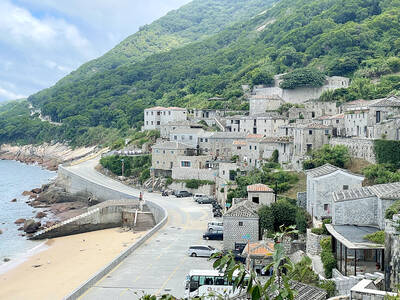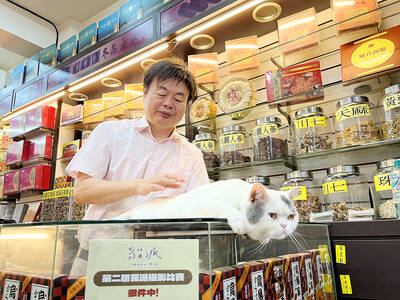The reasons women cannot get pregnant are not limited to ovarian hypofunction or oviductal obstructions — sometimes the uterine environment can cause infertility, a gynecologist said.
Fertility Society of the Republic of China chairman and clinical gynecologist Chang Fan (張帆) said the nation’s fertility rate was lower than all 193 countries listed on the UN’s World Fertility Patterns in 2013.
The Health Promotion Administration’s statistics also show that the prevalence of infertility in Taiwan was about 10 to 15 percent — approximately one in seven couples is infertile, he said.
Chang said a 29-year-old woman surnamed Hung (洪) suffered severe menstrual pain and after trying for two years, was unable to become pregnant. A doctor diagnosed her with endometriosis — endometrial tissue that normally lines the uterus grows outside the uterus — and adenomyosis — endometrial tissue that exists within and grows into the muscular wall of the uterus — and recommended that she have her uterus removed.
Hung sought further medical advice from Chang, as she wanted to have a baby.
Chang suggested modified surgery to remove most of the endometrial tissue and ovarian cysts. Hung conceived one month after the surgery.
Chang said adenomyosis is similar to endometriosis, but the endometrial tissue grows inside the muscular wall of the uterus, making the uterine muscle wall relatively thick and inelastic, which can cause heavy or prolonged menstrual bleeding, severe cramping or sharp pelvic pain during menstruation.
Traditional treatments include a hysterectomy or temporary injections, but these methods can affect a patient’s ability to conceive, he said.
Chang said in vitro fertilization is often the most effective treatment for infertility, but if the uterus is inhospitable, a fertilized ovum cannot survive.

The Chinese military has built landing bridge ships designed to expand its amphibious options for a potential assault on Taiwan, but their combat effectiveness is limited due to their high vulnerability, a defense expert said in an analysis published on Monday. Shen Ming-shih (沈明室), a research fellow at the Institute for National Defense and Security Research, said that the deployment of such vessels as part of the Chinese People’s Liberation Army (PLA) Navy’s East Sea Fleet signals a strong focus on Taiwan. However, the ships are highly vulnerable to precision strikes, which means they could be destroyed before they achieve their intended

The first two F-16V Bock 70 jets purchased from the US are expected to arrive in Taiwan around Double Ten National Day, which is on Oct. 10, a military source said yesterday. Of the 66 F-16V Block 70 jets purchased from the US, the first completed production in March, the source said, adding that since then three jets have been produced per month. Although there were reports of engine defects, the issue has been resolved, they said. After the jets arrive in Taiwan, they must first pass testing by the air force before they would officially become Taiwan’s property, they said. The air force

GLOBAL: Although Matsu has limited capacity for large numbers of domestic tourists, it would be a great high-end destination for international travelers, an official said Lienchiang County’s (Matsu) unique landscape and Cold War history give it great potential to be marketed as a destination for international travelers, Tourism Administration Director General Chen Yu-hsiu (陳玉秀) said at the weekend. Tourism officials traveled to the outlying island for the Matsu Biennial, an art festival that started on Friday to celebrate Matsu’s culture, history and landscape. Travelers to Matsu, which lies about 190km northwest of Taipei, must fly or take the state-run New Taima passenger ship. However, flights are often canceled during fog season from April to June. Chen spoke about her vision to promote Matsu as a tourist attraction in

PAWSITIVE IMPACT: A shop owner said that while he adopted cats to take care of rodents, they have also attracted younger visitors who also buy his dried goods In Taipei’s Dadaocheng (大稻埕), cats lounging in shops along Dihua Street do more than nap amid the scent of dried seafood. Many have become beloved fixtures who double as photography models, attracting visitors and helping boost sales in one of the capital’s most historic quarters. A recent photo contest featuring more than a dozen shop cats drew more than 2,200 submissions, turning everyday cat-spotting into a friendly competition that attracted amateur and professional photographers. “It’s rare to see cats standing, so when it suddenly did, it felt like a lucky cat,” said Sabrina Hsu (徐淳蔚), who won the NT$10,000 top prize in